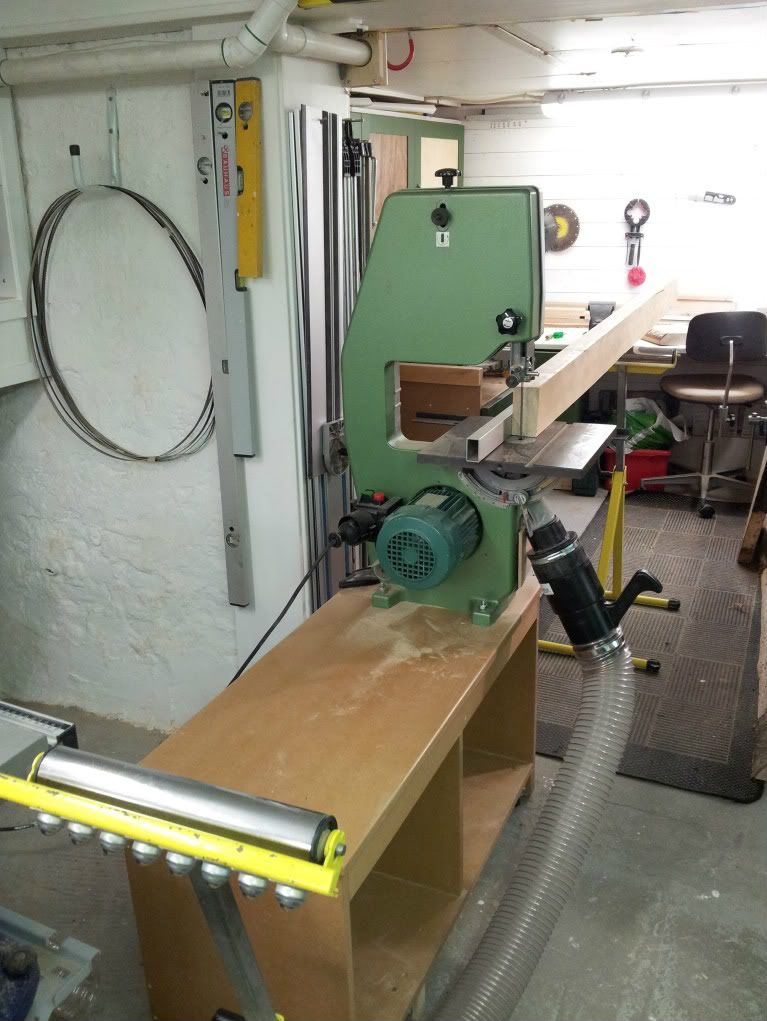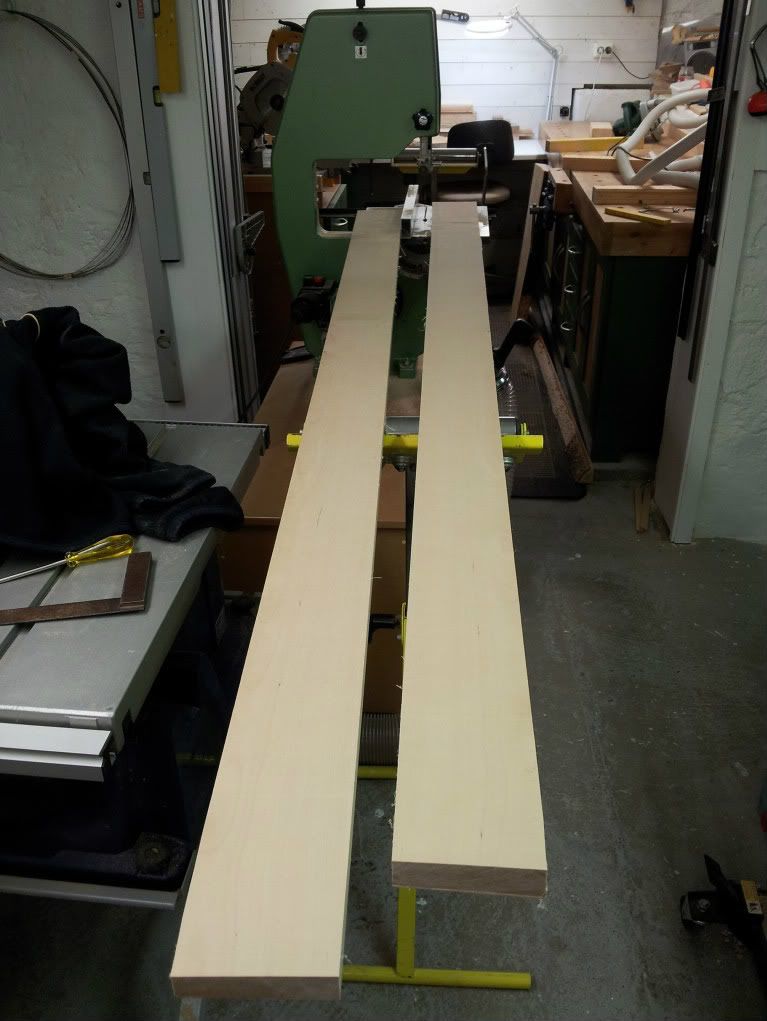sometimewoodworker":hm1nxiwb said:I would be interested to know how to tune out drift other than by using a saw set.
I believe Steve is referring to adjusting the blade to be parallel to the mitre slot. Of course, he can't outright say "buy Workshop Essentials 4"!
I took a different approach, which has served me well for a little while now; if you can't get the blade parallel to the mitre slot, then you need a mitre slot parallel to your blade... ;-)
Of course, I've only used it for 90-degree cuts and 45-degree cuts in combination with a rafter square, other angles would need one copy of the angle cut beforehand to hold the wood against, unless you wanted to mount your existing mitre fence onto the sled...!
(As to eliminating drift, I found that sufficient tension + decent, wide blade + fence parallel to blade + careful feed rate was all I needed.)














































